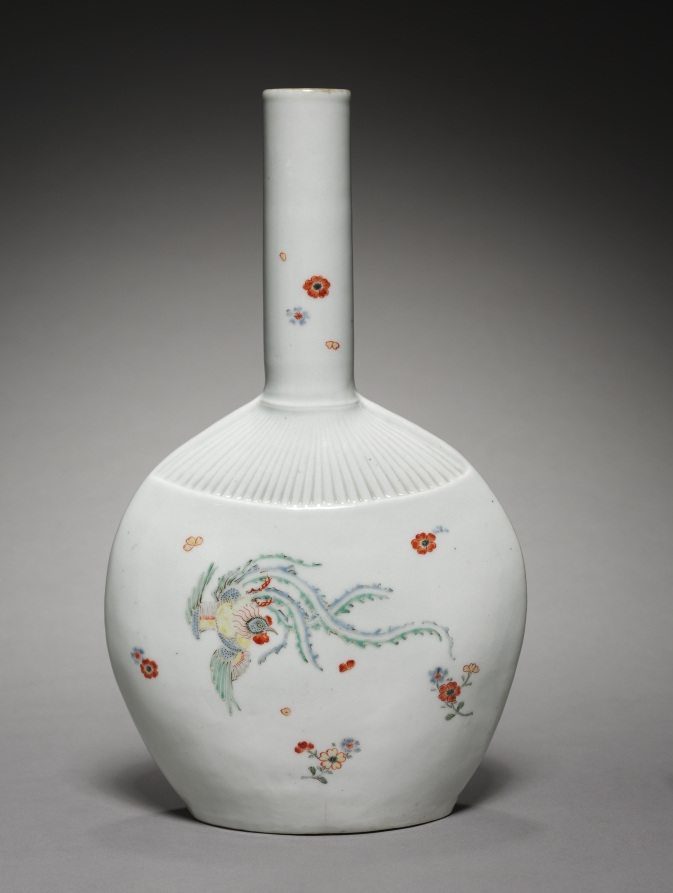| schema:description 9 | "id: 157061" |
| schema:description | "technique: Imari ware porcelain, molded, carved, and glazed with overglaze enamel decoration" |
| schema:description | "wall_description: Possibly used during the summer, this fan-shaped flask features a phoenix on one side and a tiny bird on the other. It is in the style called <em>kakiemon</em> (after the name of the artisan family). The style is common among Japanese export porcelain known as Imari ware (after the name of the port) or Arita ware (after the name of the city of production). The phoenix is an imaginary bird that generally symbolized the imperial family. The Japanese adapted representations of a long-tailed chicken (<em>chobikei</em>) or a long-tailed bird (<em>onagatori</em>) to the image of the phoenix. This kind of phoenix design appears in the high-quality art of Kano school screens as well as the decorative arts....(more)" |
| schema:description | "collection: Japanese Art" |
| schema:description | "tombstone: Flask in the Shape of a Fan, 1600s. Japan, Edo Period (1615-1868), 17th Century. Imari ware porcelain, molded, carved, and glazed with overglaze enamel decoration; diameter: 19.4 cm (7 5/8 in.); overall: 33.3 cm (13 1/8 in.). The Cleveland Museum of Art, Severance and Greta Millikin Purchase Fund 1993.2...(more)" |
| schema:description | "measurements: Diameter: 19.4 cm (7 5/8 in.); Overall: 33.3 cm (13 1/8 in.)" |
| schema:description | "creditline: Severance and Greta Millikin Purchase Fund" |
| schema:description | "culture: Japan, Edo Period (1615-1868), 17th Century" |
| schema:description | "type: Ceramic" |

